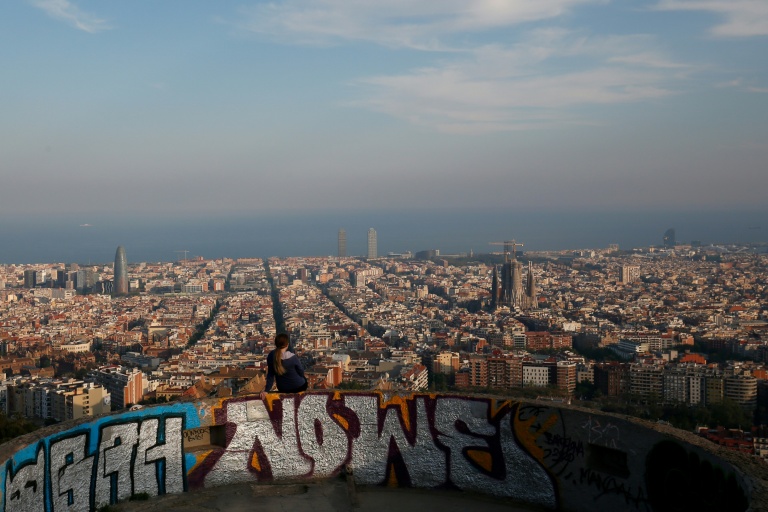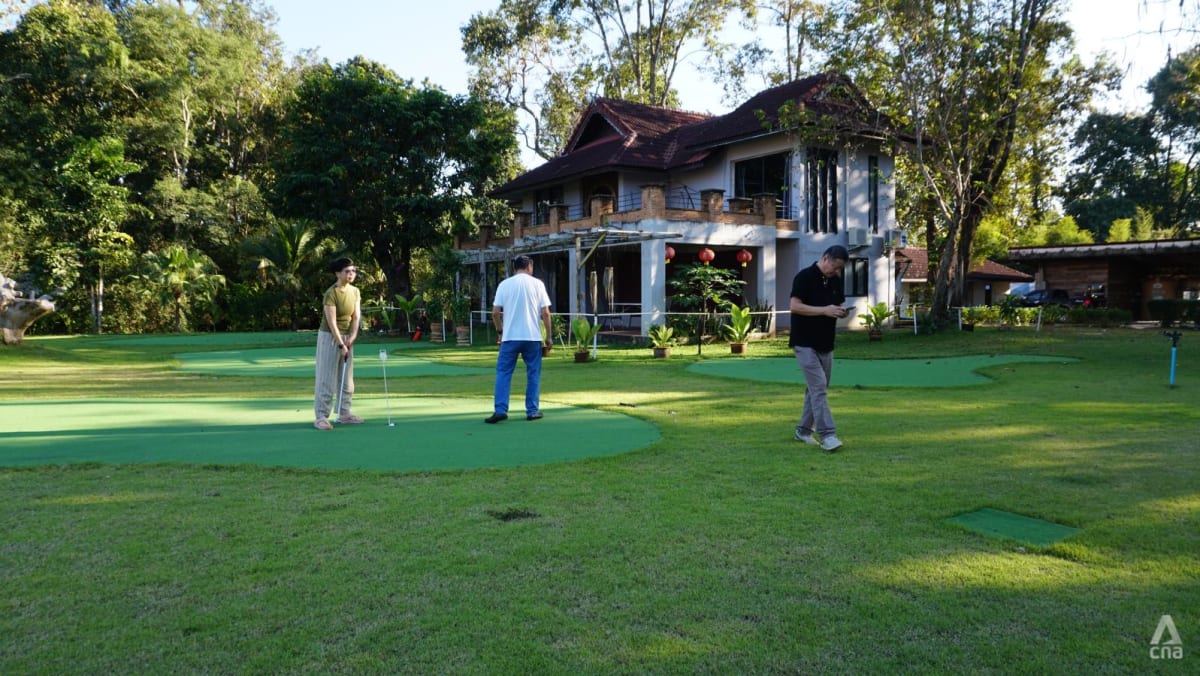COPENHAGEN — Where does the conversation go after sustainability?
It was feared that the fall 2024 edition of Copenhagen Fashion Week, which ran from Monday through Thursday, would have nothing left to say other than just green talk. But the Danes proved quite otherwise with a jam-packed schedule that touched on community and the inner makings of building a robust business.
“Lately, the world seems to be falling apart, even with an unprecedented humanitarian crisis in Gaza and elections in both the U.S. and the European Parliament. Their potential outcomes should strike fear in all of us and remind us that democracy is not to be taken for granted,” said Cecilie Thorsmark, the chief executive officer of Copenhagen Fashion Week, in her opening speech to a room full of designers, buyers, journalists and C-suite executives.
“To many people, our industry looks like a bubble of fuzzy dreams, quite far away from reality — and sometimes it is, and we certainly cannot ignore that privilege, that comes from an obligation to speak up and to act,” she added.
Some chose to do so. Alectra Rothschild of Masculina, for example, shed a spotlight on the anti-fuzzy Scandi aesthetic by choosing a cast that featured her friends and people from the LGBTQ+ community.
Alectra Rothschild / Masculina
James Cochrane
Her latest collection was a continuation from her last, which was titled “R.I.P. Masculina,” exploring the subject of rebirth by way of raincoats, bikinis and PVC.
“It’s like I died and woke up on a beach in Ibiza in 1992,” said Rothschild, the first openly trans designer to show at Copenhagen Fashion Week.
Rothschild’s powerfully eccentric collections are already securing support from retail partners as the brand plans to introduce e-commerce on its newly launched website.
“We work with a tight budget and we want to grow slowly but surely,” said the designer.
Copenhagen’s hot ticket, Ganni, dropped out this season to make space for an exhibition titled “Future, Talent, Fabrics” that highlights the city’s young talent, such as Nicklas Skovgaard, Amalie Røge Hove, Alectra Rothschild, Sarah Stem, Sahar Jamili, Jens Ole Árnason and Sisse Bjerre.
Each designer produced a garment that was on display at the gallery Nikolaj Kunsthal.
“The past few years have not been easy conditions for emerging talent, so now more than ever feels like the right time to give way to new voices,” said Ganni’s creative director Ditte Reffstrup.
Kristofer Kongshaug of Forza Collective, a new name on the scene and a previous designer at Raf Simons, Christian Dior Couture, Balmain and Lanvin, leaned into a clean and crisp aesthetic that’s easily recognizable against other more minimal labels.

Forza Collective
James Cochrane
“It feels really good [having my own brand] because you go through life picking up experiences and ideas, which you marinate in,” said the Norwegian-born designer.
His collection had whiffs of his formative years that played on the attributes of a full wardrobe and the art of a uniform: a slightly cinched overcoat; gray skirts with subtle slits; brown drop-waist dresses, and neckties worn with short-sleeve shirts, which Kongshaug wore to take his bow in at the end of the show.
The theme of the classics continued at OpéraSport, which staged its show at Copenhagen’s opera house as a play on the brand’s name.

OpéraSport
James Cochrane
The floral motifs disappeared as the low-key collection focused on ruching techniques and solid colors against the gentle backdrop of Aphex Twin’s piano instrumental “Avril 14th,” which provided romance and yearning.
“From the start we have maintained a keen focus on cost management. This strategic focus has enabled us to navigate a challenging market environment successfully,” said the brand’s cofounder Stephanie Gundelach, adding that the business saw growth in 2023.
Despite the global luxury slowdown and economic turmoil, business remains strong in Copenhagen as brands continue to focus on the middle-market price range.
Newcomer Nicklas Skovgaard admitted to seeing “steady growing sales figures with our last collection and having doubled the sales and production with the last collection sold.”
He based his whimsical collection on three different muses — Tess McGill, from the 1984 film “Working Girl,” Lecia Jønsson, the lead singer of Danish ’80’s band Laban, and his mother, Annie, who went to London in the mid-’80s to become an aerobics instructor.

Nicklas Skovgaard
James Cochrane
Models swanned around the room with hands on their hips as their hairsprayed beehives wobbled to the sound of the music.
At Skall Studio, the business’ turnover increased by 39.4 percent from 2022 to 2023, according to founders Julie and Marie Skall.
Their designs are rooted in intellectualism, sentimentality and wearability — this season they titled the collection “Letters,” as an ode to New York City’s creatives in the late ’60s such as Joan Didion and Leonard Cohen.
“This time of the year we spend more time reading, writing and thinking. We have always enjoyed this time of the year — it somehow feels like a clean sheet, and it makes us dream,” said Marie Skall.

Skall Studio
James Cochrane
Helmstedt’s quirky world of psychedelic colors and prints is chasing expansion as the brand opened in new markets such as the U.S. and Japan last year. This year the brand is continuing its efforts by reaching out to places closer to home that include the U.K. and homebound Scandinavian countries by trimming the vibrancy and offering hues of brown, beige, blue, orange, pink and even black.
Staying put in Scandinavia’s beige comfort zone has proven to be successful for Anne-Dorthe Larsen, the founder of Lovechild 1979.
“The sales performance of our 2024 [spring and fall] collections has been strong, and we anticipate achieving a minimum annual growth of 25 percent,” said the designer, who has also opened new markets for her business.
Even though the clothes didn’t provide a strong creative viewpoint, Larsen, like many designers hailing from Copenhagen, is dressing real people that want to dress for themselves.
However, for Rotate’s cofounders Jeanette Madsen and Thora Valdimarsdottir, it’s about dressing for others.

Rotate
James Cochrane
“We love to embrace the female body and be sexy. When we go out we don’t really think about what the other girls are going to think looks cool. We’re like, ‘what does a man think is sexy?’ We love to dress up for a man,” said a cheery Valdimarsdottir backstage.
The duo spent several days at Denmark’s Design Museum flicking through old books and magazines that referenced the ‘50s. They incorporated the tropes they found into the collection, including knots, draping, cinched waistlines, and longer lengths.
This collection was a segue into a new category for Rotate: bridalwear and separates.
The show closed with eight brides coming out in various wedding-dress styles: long, short, sequined, sheer, corseted and more.
“We found out that Elizabeth Taylor had been married eight times, so it’s a tribute to her and her eight marriages,” said Madsen.
Rotate’s show was one of the few where the casting didn’t feel like a tick box exercise as the models came down the runway confidently in their pieces.
The party rolled over to J.Lindeberg, where chief creative officer Neil Lewty hosted a nostalgic rave from the Y2K club scene filled with skiwear.

J.Lindeberg
James Cochrane
“We’re doing pretty well, our ski business is going up and we’re investing quite a lot into that,” he said backstage, as guests sipped on Bacardi Breezers post-show.
The designer admitted that the euphoric feeling of a rave is not one that’s personal to him, but he enjoys the idea of disruption it provides.
“I like the idea of walking up to a traditional golf club, opening the door and being greeted by a rave,” said Lewty, explaining that J.Lindeberg’s golf business is booming outside of the U.K.
Saks Potts cofounders Cathrine Saks and Barbara Potts reminisced the sleazy era of the 2010s, musing on Kate Moss.
“Particularly in the early 2010s when she made all of her festival appearances wearing short dresses with big, chunky belts and long fringe boots. It was also the time when she designed her collection for Topshop, a period that we both remember as a highlight of our teenage years, as our interest was growing bigger and bigger,” said Potts.

Saks Potts
James Cochrane
The brand took a more conscious approach this season – instead of 4,000 guests, it was an intimate one with 60 guests in a store and 14 looks being presented.
“Given the numerous challenges and difficulties in the world right now, it felt inappropriate to hold a grandiose event. That’s why we have decided to scale down the show to its core,” said Saks.
The business closed 2023 with its “best year ever in the history of Saks Potts,” said Potts.
Marimekko’s signature girly florals were the antidote for the gray weather. The brand took over the National Gallery of Denmark’s tall-ceiling foyer opposite a calm lake to show its new line of denim, Maridenim, as they eye up scaling the business into international markets.
“Our main markets are Northern Europe, North America and the Asia-Pacific region, and we focus on Asia as the most important geographical area for international growth. We approach our key markets through key cities,” said creative director Rebekka Bay, explaining that the business strengthened its position in Asia and Scandinavia with store openings in both regions.
Marimekko’s numbers for 2023 will be published in mid-February. In 2022, the business’ net sales totaled 167 million euros and comparable operating profit reached 30.4 million euros.
Copenhagen’s deep thinker Henrik Vibskov meditated on therapy and addiction this season stemming from the state of the current “fragile youth.”
The designer asked during a team-building exercise what their dream working day would look like and someone jotted down “daily therapy sessions.”
Vibskov went down a rabbit hole of looking into different types of therapy, from gaming therapy to horse therapy, where participants can spend 30 minutes with a horse, cleaning, tending to the animal and petting them.
The designer incorporated the motif of moving horses with two legs onto knit sweaters and scarves.
Bruce Pask, senior editorial director at Neiman Marcus, said the city broke free from the assumed cliché of pure utilitarian minimalism.

Mfpen
James Cochrane
He praised designer Sigurd Bank of Mfpen’s deadstock fabric collection for its “cool, easy tailoring with clever detailing and slouchy trousers layered with collared cardigans.”
Off the runway, the city found its voice, literally and figuratively.
At Baserange, vocal group Ilinix performed alongside styles that borrowed cues from the art of listening and embracing silence.
The brand’s designers, Marie-Louise Mogensen and Blandine de Verdelhan, used different hues to indicate parts of the body: red for the bloodstream, white for bones, and green tones for digestion.
Pandora hosted an arts and craft activation for guests to customize charms onto silver bracelets and necklaces at Tableau, the city’s concept store that doubles as a florist and studio space for creatives.
Eyewear designer Vincent Catani teased that his next collection will drop in spring 2025, making a mindful decision to marry craft with sustainability. His pieces, which are handmade in Japan, take inspiration from the ‘60s and ‘70s.
Each pair of sunglasses is sold with a detachable black leather case accompanied with a small precision screwdriver — a tongue-in-cheek imitation of how Cartier sells their Love Bracelets.







